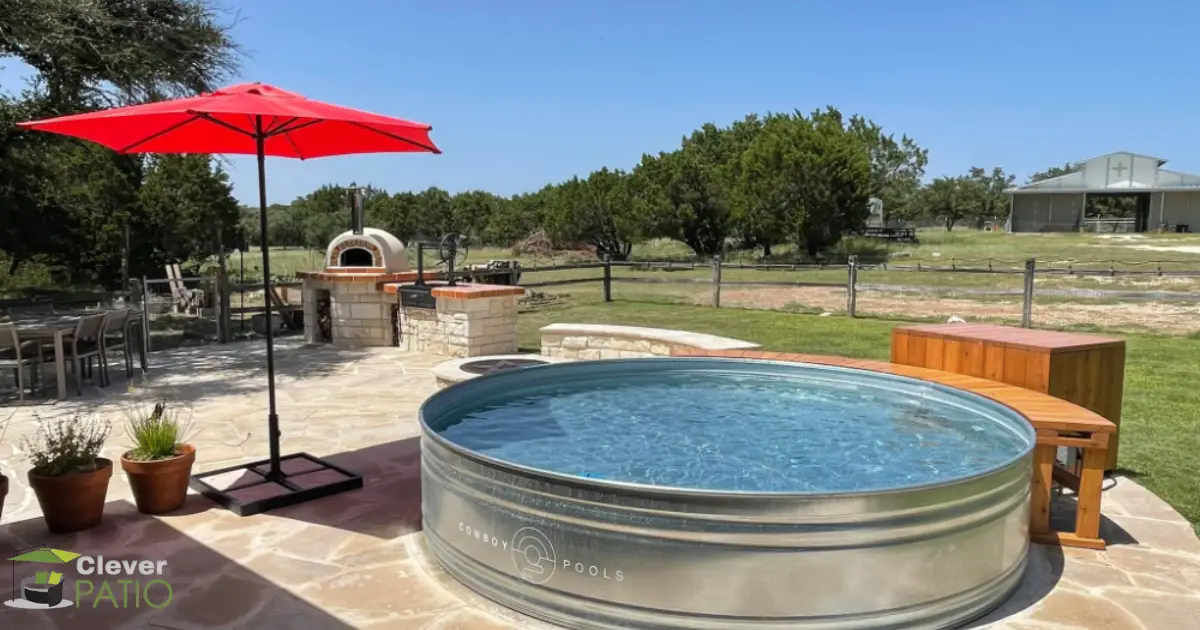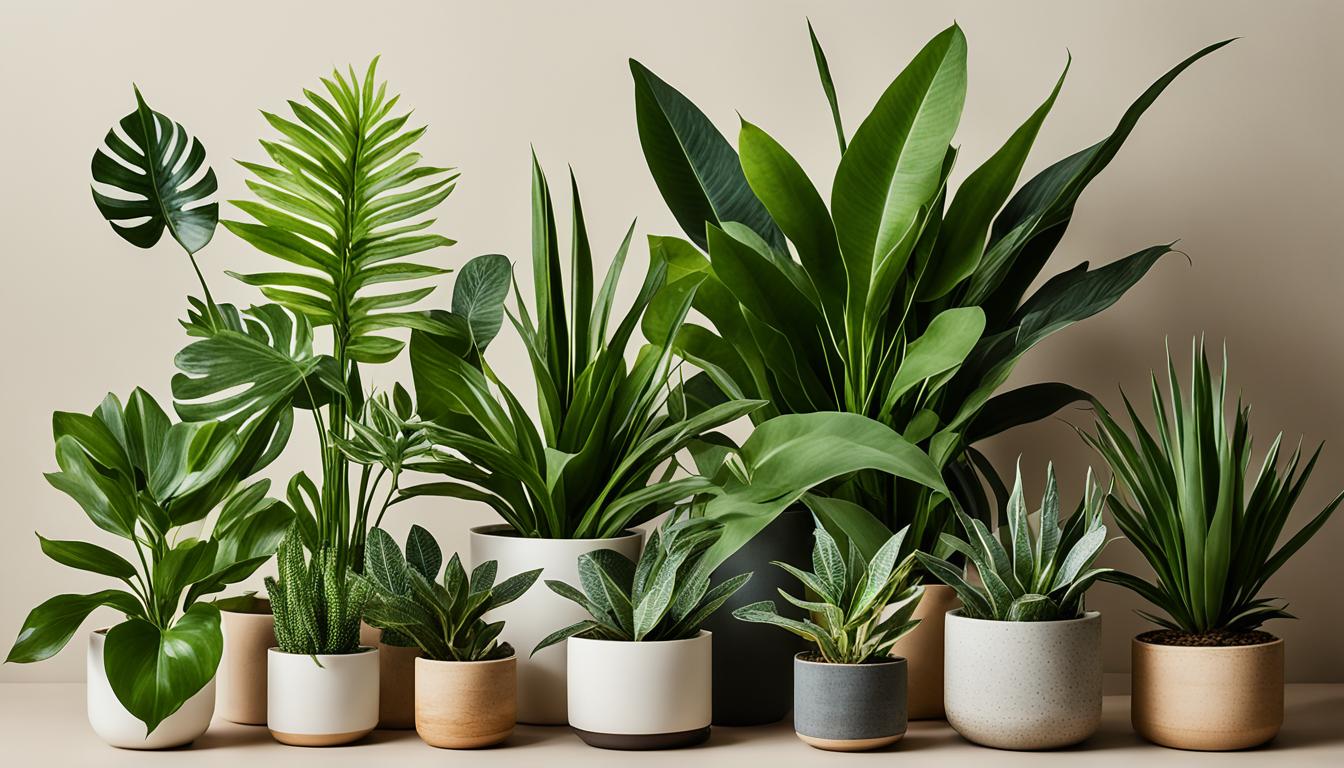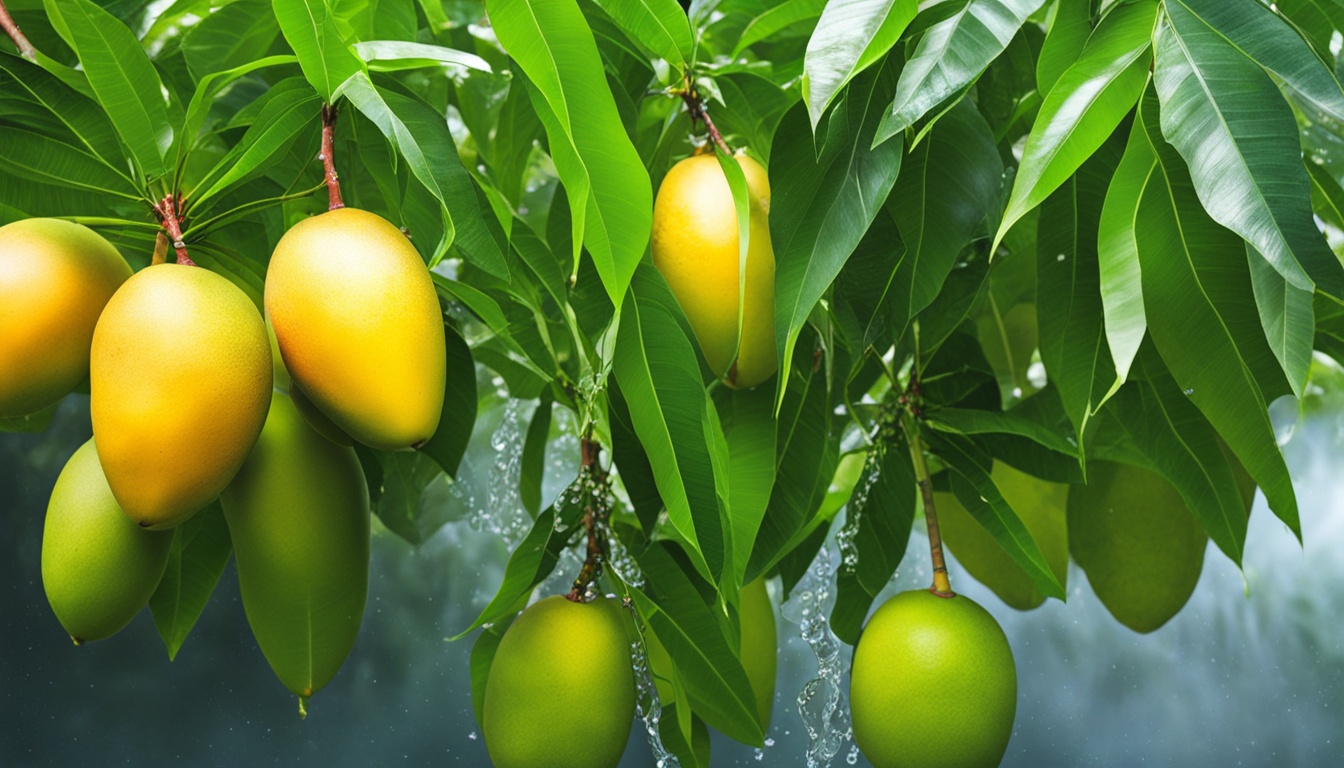Growing tasty and plenty of tomatoes doesn’t need to be tied to traditional soil gardening.
Soilless tomato growing, or hydroponics, is a new way to grow these fruits all year, even in small spaces.
This guide will show you the perks and how-tos of growing tomatoes without soil. It will help you make the most of tomato-growing without soil.

Key Takeaways
- Discover the advantages of growing tomatoes without soil, including increased yields, reduced pests, and year-round production.
- Learn how to choose the right growing medium and set up a hydroponic system for your soilless tomato garden.
- Understand the essential nutrient requirements and how to maintain optimal growing conditions for thriving tomato plants.
- Explore effective pruning and training techniques to maximize your soilless tomato harvest.
- Gain insights into managing common pests and diseases for a successful soilless tomato cultivation experience.
Introduction to Growing Tomatoes Without Soil
Tomatoes are a favorite in many gardens, but growing them in soil can be tough, especially in small spaces.
Luckily, there’s a new way to grow tomatoes called soilless tomato cultivation. This method has many advantages of hydroponic tomato growing and reasons to grow tomatoes without soil.
It’s becoming popular among home and commercial growers.
Benefits of Soilless Tomato Cultivation
One big plus of soilless tomato cultivation is the control it gives you over the plants. With hydroponics or other soilless systems, you can adjust water, nutrients, and oxygen to the roots. This leads to better growth and more tomatoes.
Plus, you can grow tomatoes all year, no matter the season or weather outside.
Another big plus is how well it works in small spaces or cities. You don’t need big fields for soil gardening. With soilless systems, you can grow tomatoes in vertical towers, hanging baskets, or even on balconies.
This makes it easy for city folks and those with little outdoor space to grow their own food.
“Soilless tomato cultivation allows for precise control over the growing environment, leading to higher yields and year-round production, even in urban settings.”
The benefits of soilless tomato cultivation go beyond just practical uses. It cuts down on pests and diseases by skipping soil.
It’s also better for the planet because it uses less water and resources. This makes it a great choice for those who care about the environment.
The advantages of hydroponic tomato growing and reasons to grow tomatoes without soil are clear.
Soilless growing is a smart choice for both new and seasoned gardeners. Next, we’ll explore how to set up and keep a soilless tomato garden.
Choosing the Right Growing Medium
Choosing the right growing medium is key for healthy and productive soilless tomato plants.
Coco coir, perlite, and rockwool are top choices for hydroponic tomato systems. They are versatile and work well.
Hydroponic Systems for Soilless Tomato Cultivation
Tomatoes do well in many hydroponic setups, each with its own benefits. The DWC system keeps roots always in water. The ebb and flow method floods and drains the medium at set times. The NFT system has a constant flow of nutrients over the roots.
Choosing the best hydroponic system for your tomatoes depends on space, budget, and experience. Look at the pros and cons of each system to pick the right one for your goals and resources.
- Coco coir: A renewable, sustainable medium that retains moisture and provides excellent aeration for tomato roots.
- Perlite: A lightweight, inert material that improves drainage and oxygen availability in hydroponic systems.
- Rockwool: A synthetic, sterile medium that offers superior water and nutrient holding capacity, making it ideal for high-yield tomato production.
The choice of growing medium and hydroponic system depends on your needs and preferences. Knowing the features of each option helps you make a smart choice. This way, your soilless tomato garden will thrive.
Grow Tomatoes Without Soil
Growing tomatoes hydroponically is a new way to farm that has many benefits over traditional soil farming.
This guide will help you grow tomatoes without soil. It gives you the key steps to grow tomatoes in a soilless setup.
Seed Selection and Germination
Start by picking top-quality tomato seeds for hydroponics. Then, follow these steps for successful germination:
- Soak the seeds in water for 12-24 hours to help them germinate faster.
- Plant the seeds in a medium like coco coir or perlite. Keep the medium moist.
- Keep the seeds warm, around 70-85°F, to help them sprout quickly.
- Watch the seedlings closely. Move them to the hydroponic system when they have their first true leaves.
Transplanting and Hydroponic System Setup
When your tomato seedlings are ready, move them to the hydroponic system. Carefully take the seedlings from the medium, keeping the roots safe. Put them in the hydroponic system’s containers. Make sure they’re secure and give them the right nutrient solution and water.
Setting up and keeping the hydroponic system right is key to growing tomatoes without soil. Make sure the system works well, the nutrient solution is balanced, and the environment is right for your tomato plants.
Setting Up a Hydroponic System
Building a hydroponic system for tomatoes is rewarding and efficient. It lets you grow these tasty fruits without soil.
You need the right equipment and follow some steps for a thriving hydroponic tomato garden. Let’s explore the details.
First, collect the equipment needed for hydroponic tomato growing. You’ll need a grow tub, a water pump, an air pump, grow lights, and a hydroponic nutrient solution. With these items, you can start the steps to set up a hydroponic tomato garden.
- Pick a good spot for your hydroponic system, making sure it gets enough sunlight or has the right grow lights.
- Set up the grow tub and connect the water and air pumps as the manufacturer says.
- Fill the tub with a growing medium like coco coir or expanded clay pellets for your tomato plants.
- Plant your tomato seedlings or transplants in the medium, leaving enough space for root growth.
- Link the water pump to a nutrient solution reservoir, making sure the pump moves the solution through the medium.
- Use the air pump to give the roots the oxygen they need for healthy growth.
- If you’re growing indoors, set up the grow lights and adjust them to match natural daylight hours.
By following these steps to build a hydroponic system for tomatoes, you’re on your way to a harvest of juicy, tasty tomatoes without soil.
| Equipment Needed | Purpose |
|---|---|
| Grow tub or container | Provides a contained environment for the hydroponic system |
| Water pump | Circulates the nutrient solution through the growing medium |
| Air pump | Supplies oxygen to the plant roots |
| Grow lights (for indoor growing) | Provides the necessary light for photosynthesis |
| Hydroponic nutrient solution | Supplies the essential nutrients for plant growth |
With these steps and the right equipment needed for hydroponic tomato growing, you’re set to build a hydroponic system for tomatoes. This will give you a harvest of delicious, fresh tomatoes.
Nutrient Requirements for Soilless Tomato Growing
Growing tomatoes without soil means you need to pay close attention to their nutrients. It’s key for healthy growth and lots of tomatoes. Let’s look at what nutrients your tomatoes need to grow well.
Understanding Essential Nutrients
Tomatoes need a mix of macronutrients and micronutrients to do well in hydroponic systems. The big three are nitrogen (N), phosphorus (P), and potassium (K).
They help with plant structure, making food through photosynthesis, and staying strong. Then there are micronutrients like calcium, magnesium, and others that are vital too.
It’s important to keep the right levels of nutrients in your hydroponic setup. This ensures your tomatoes grow well and produce lots of fruit.
By keeping an eye on and adjusting the nutrient mix, you can give your tomatoes exactly what they need.
| Nutrient | Role in Tomato Plants | Optimal Range |
|---|---|---|
| Nitrogen (N) | Promotes healthy foliage and vegetative growth | 100-200 ppm |
| Phosphorus (P) | Supports root development and fruit production | 40-80 ppm |
| Potassium (K) | Enhances disease resistance and improves fruit quality | 200-400 ppm |
| Calcium (Ca) | Strengthens cell walls and prevents blossom-end rot | 100-200 ppm |
| Magnesium (Mg) | Supports chlorophyll production and overall plant health | 40-80 ppm |
Knowing the essential nutrients for soilless tomato cultivation and how to use them is key. This way, you can make the best growing conditions for your tomatoes. They’ll thrive and give you a big harvest.
Maintaining Optimal Growing Conditions
Temperature, Humidity, and Light Requirements
Creating the perfect growing space is key for soilless tomato plants to flourish. We must watch and manage temperature, humidity, and light carefully.
Tomatoes do best in a warm spot, between 70-85°F (21-29°C) during the day. At night, they like it a bit cooler, around 60-70°F (15-21°C). Keeping the ideal temperature for hydroponic tomatoes helps them grow strong and produce lots of fruit.
Humidity is also crucial for these plants. The ideal humidity levels for soilless tomato growing should be 50-70%. This keeps away fungal diseases and supports healthy growth.
Soilless tomato plants need the right amount of light. They should get at least 6 hours of direct sunlight or 12-16 hours of extra light. This helps them make food through photosynthesis and grow more fruit.

By keeping an eye on and adjusting these factors, growers can make sure their soilless tomato plants do well. This way, they can reach their highest potential.
Pruning and Training Soilless Tomato Plants
Proper pruning and training are key for healthy, productive tomato plants in soilless setups. These methods help improve air flow, boost fruit production, and increase the yield of hydroponic tomatoes.
Removing suckers is a crucial pruning step for hydroponic tomatoes. These are the side shoots that grow from the main stem. By taking them off, the plant focuses more on growing big, healthy fruits instead of extra leaves.
Pruning techniques for hydroponic tomatoes should be done every 7-10 days to keep the plant in top shape.
Training and trellising hydroponic tomato plants is also vital. Without soil, these plants might need more support because their stems can be weaker.
A strong trellis or cage keeps the plant upright, stops fruits from touching the ground, and improves air flow around the leaves.
The importance of plant training in soilless tomato growing is huge. By guiding the plant’s growth and keeping it shaped right, growers can get a bigger harvest and lower the chance of pests and diseases. Regular pruning and training are key for a rich crop of tasty, high-quality soilless tomatoes.
| Pruning Technique | Benefits |
|---|---|
| Removing Suckers | Directs energy to fruit production, improves airflow |
| Selective Leaf Removal | Enhances light penetration, increases air circulation |
| Topping | Encourages lateral growth, prevents excessive height |
“Proper pruning and training are the keys to unlocking the full potential of your hydroponic tomato crop.”
Pest and Disease Management
Keeping a hydroponic tomato garden healthy and free of pests is key. Tomato plants in these systems can face many pests and diseases.
These can hurt yield and quality if not handled right. Using integrated pest management (IPM) strategies is vital for keeping hydroponic tomato systems healthy.
Identifying and Controlling Common Issues
First, you need to spot the problem correctly. Pests like aphids, spider mites, whiteflies, and thrips can hit hydroponic tomatoes. Regular checks and quick action are important. Diseases such as powdery mildew, leaf spot, and root rot can also strike and need fast treatment.
To fight these issues, use integrated pest management methods. This might mean using helpful insects, organic pesticides, and keeping the growing area clean. Clean equipment and sterilize the soil to stop pests and diseases before they start.
| Common Pests | Symptoms | Control Measures |
|---|---|---|
| Aphids | Leaf curling, stunted growth, honeydew production | Introduce ladybugs or lacewings, use insecticidal soap |
| Spider Mites | Stippling on leaves, webbing, premature leaf drop | Spray with neem oil or horticultural oils, increase humidity |
| Powdery Mildew | White, powdery growth on leaves and stems | Use baking soda or fungicide, improve air circulation |
By being watchful and using a strong IPM plan, growers can lessen the effects of pests and diseases. This ensures a good harvest from their hydroponic tomato systems.

Harvesting and Storing Soilless Tomatoes
Harvesting your hydroponic tomatoes at the right time is key. Wait until they turn a deep color and feel soft when pressed.
Don’t pick tomatoes that are still green, as they might not ripen well off the plant. Be patient and wait for them to ripen fully.
For keeping your tomatoes fresh, proper storage is important. Clean the tomatoes with a damp cloth gently, being careful not to damage the skin.
Keep them in the fridge to stay fresh for about a week. If you want to keep them longer, try canning, freezing, or dehydrating them.
Follow these tips for when to harvest hydroponic tomatoes, tips for storing soilless tomatoes, and maximizing the shelf life of hydroponically grown tomatoes. This way, your hydroponic garden efforts will reward you with a tasty harvest that lasts for weeks.
FAQ
What are the benefits of growing tomatoes without soil?
Growing tomatoes without soil offers many advantages. You have better control over the growing conditions. You can grow them all year and even in small spaces or cities.
What are the different types of growing mediums used for hydroponic tomato cultivation?
For hydroponic tomatoes, you can use coco coir, perlite, or rockwool. Each has its own benefits and needs special care.
How do I set up a hydroponic system for growing tomatoes?
To set up a hydroponic system, pick the right equipment like grow tubs, pumps, and lights. Then, put the system together based on the hydroponic method you choose, like deep water culture or ebb and flow.
What are the essential nutrients required for soilless tomato cultivation?
Hydroponic tomatoes need a balanced nutrient solution. This includes macronutrients like nitrogen, phosphorus, and potassium. It also includes micronutrients like calcium, magnesium, and iron for healthy growth and fruit.
How do I maintain the optimal growing conditions for hydroponic tomatoes?
For hydroponic tomatoes, keep the temperature, humidity, and light right. Watch and adjust these factors to help the plants grow well.
What are the best pruning and training techniques for hydroponic tomato plants?
Use pruning and training to help hydroponic tomatoes grow well. Remove suckers, manage growth, and provide support. This improves air flow, controls size, and boosts fruit production.
How do I identify and manage pests and diseases in a hydroponic tomato system?
Keep an eye out for pests and diseases in your hydroponic tomatoes. Use pest management strategies to stop and treat them early.
When is the best time to harvest hydroponic tomatoes, and how should I store them?
Harvest hydroponic tomatoes at the right time for the best taste and quality. Store them in the right temperature and humidity to keep them fresh longer.



